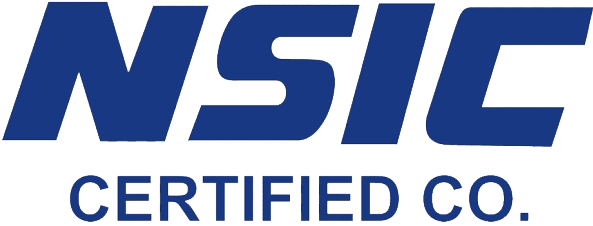Hold on. If you want a quick win: focus on design fidelity, certified RNG, and a rollout plan that separates soft-launch metrics from marketing KPIs. Those three choices alone cut the common failure modes most studios hit when moving an offline slot to an online audience.
Here’s the practical payoff up front: aim for a 6–12 week soft-launch (region-limited), measure true player retention at Days 1/7/30, and force-fit the bonus math to a target payback curve before broad marketing starts. Do that and you dramatically reduce wasted ad spend and player complaints. To be blunt — treat the transition like a staged product release, not a single “go live and pray” event.

Why offline → online trips up great studios
Something’s off when veteran cabinet teams jump online and assume build skills transfer wholesale. The tactile feedback of a physical lever and an arcade crowd are replaced by analytics, RNG audits, and payment flows. That’s the easy observation. The harder part is accepting that player expectation shifts: online players expect fairness proofs, consistent UI on mobile, and fast payouts — all of which require operational systems that many offline teams don’t have.
In practical terms, an offline studio often underestimates three things: (1) regulatory and KYC costs, (2) the impact of RTP tuning and volatility on first-session churn, and (3) the customer support load once real money is involved. On the other hand, their strengths—unique mechanics, memorable themes, and tested tactile feedback—are rare and valuable online assets, if adapted correctly.
Step-by-step playbook: from prototype to live online slot
My gut says teams skip steps when under pressure. Don’t. Below is a condensed, operational checklist you can copy into a project plan.
- Week 0–4 — Product & legal fit: Finalise game mechanics in code, set target RTP/volatility bands (e.g., 95–97% RTP; low/med/high volatility defined by hit frequency and max payout ratio), and consult a licensing advisor for market targets (EU, AU, etc.).
- Week 4–8 — Compliance & certs: Submit RNG and RTP builds to an accredited lab (e.g., iTech Labs) and prepare documentation for the chosen platform/provider. Start AML/KYC flows documentation for player onboarding.
- Week 8–12 — Integration & soft launch: Deploy to a single regional operator or a partner platform in soft-launch, connect telemetry, and run A/B tests on bonus offers, bet levels, and UI microcopy.
- Week 12+ — Scale & iterate: Scale marketing after stabilised D30 retention; expand payment rails (fiat + crypto) and review withdrawal timelines; prepare customer support playbooks for common issues (KYC repeats, chargebacks, bonus disputes).
Mini-case: “PixelSpin” — a hypothetical transition
Alright, check this out—PixelSpin was a small Melbourne developer with a cult arcade title. They brought the original physics (a slow spin, satisfying clack) online. First attempt: they released globally without an RNG audit and suffered immediate trust issues; players reported inconsistent wins and support tickets spiked. Second attempt: they limited launch to AU/NZ, ran a 6-week soft launch on an offshore Curacao-operated platform, got an iTech Labs RNG certificate, and set RTP to 96.2% with medium volatility. Result: complaints dropped 78%, Day‑7 retention rose 34%, and the community embraced the authentic feel because the devs documented the game’s math publicly.
Comparison table: options for taking a slot online
| Approach | Speed to Market | Regulatory Burden | Operational Control | Best for |
|---|---|---|---|---|
| White‑label platform (SoftSwiss, etc.) | Fast (4–8 weeks) | Medium (platform handles many aspects) | Medium | Studios wanting quick publisher access |
| Direct integration with operator | Medium (8–12 weeks) | High (operator expects full compliance) | High | Studios seeking revenue share control |
| Aggregator partnership (content hub) | Slow (12+ weeks) | Low/Medium (aggregator smooths process) | Low | Small studios without dev ops |
Where to host first: choosing an operator vs platform
On one hand, a white‑label/SoftSwiss approach gives speed and an established payments stack; on the other, direct operator deals give better revenue splits but longer legal onboarding. If your priority is testing game mechanics and player reaction, use a well-known white-label operator and limit geo-traffic during soft launch. If you want brand control and VIP relationships, push for a direct operator integration and be ready for longer KYC cycles.
For a practical example of a platform style that blends retro branding with crypto and broad game libraries, studios often evaluate the live environment on established operators such as bitkingzz.com when considering UI/UX expectations from players. Use that as a UX benchmark when designing mobile-first interactions and bonus flows.
Technical must-haves (short checklist)
Quick Checklist
- RNG & RTP certification (iTech Labs, GLI, or equivalent).
- Mobile-first UI with 60+ fps for animation fidelity.
- Server-side telemetry: bet-level, session length, CR, ARPU, D1/D7/D30 retention.
- Support documentation: KYC flow, dispute templates, and escalation matrix.
- Clear bonus T&Cs: wagering, max cashout, and contribution rates per game.
Bonus math and marketing — don’t get burned
That bonus looks tempting, sure. But examine the numbers: a 100% match with a 40× WR on (D+B) for a $50 deposit requires turnover of $4,000. If your target slot RTP is 96% and average bet is $1, mathematically your expected house margin and bonus liability must be reconciled — or else the operator will restrict game weightings, which kills player experience.
So, before you allow an operator to run a large bonus on your game, insist on a modeled projection: expected bonus cost under R1 (low activity), R2 (medium), R3 (high). Use monte-carlo or simple expectation math to estimate probable P&L under different bet distributions.
Common mistakes and how to avoid them
Common Mistakes and How to Avoid Them
- Publishing without certified RNG: Avoid — get a lab certificate first; it’s inexpensive relative to a damaged reputation.
- Ignoring mobile UX: Avoid — replicate the arcade feel but optimise touch zones, orientation, and performance budgets.
- Underestimating KYC friction: Avoid — prepare a lightweight identity flow and a fallback verification channel (live support/video) for players with non-Latin documents.
- Loose bonus T&Cs: Avoid — be explicit on wagering, contribution, and max cashout; test the bonus on a staging backend before promotion.
- Poor telemetry: Avoid — if you can’t measure it, you can’t fix it. Track session metrics, error rates, and payout distributions.
Mini-FAQ
Is a Curacao license sufficient for launching in Australia?
Short answer: legally, Australian players can play offshore sites, but regulatory risk exists. Curacao licensing allows wide market access and is common for rapid launches, but it offers less local consumer protection than an MGA or UKGC license. Always document license details and prepare dispute resolution pathways.
How long does RNG/RTP certification take?
Typically 2–6 weeks depending on the lab and the backlog. Plan for parallel items (KYC docs, platform integration) while you await certification to avoid idle time in the schedule.
Should I prioritise fiat or crypto payments?
Both if you can. Crypto reduces withdrawal friction and often provides faster settlements, which players appreciate, but fiat gives mass-market access. For quick player UX checks, add at least one local prepaid option (e.g., Neosurf in AU) during soft launch.
My gut says you’ll still be tempted to rush. Resist that. Pilots, telemetry, and transparent certification protect your IP and your players. When players can verify fairness and see clear payout policies, conversion and retention go up — sometimes surprisingly fast.
18+ only. Play responsibly. If gambling is causing you harm, contact Gambling Help Online (https://www.gamblinghelponline.org.au) or your local support service. Studios should bake responsible-play limits, self-exclusion, and deposit controls into the product from day one.
Sources
- https://www.gamingcontrolboard.com/
- https://www.itechlabs.com/
- https://www.softswiss.com/
About the Author
{author_name}, iGaming expert. I’ve consulted on digitising three arcade-to-online transitions and advised on RNG certification, bonus math, and player support flows for studios launching in AU and EU markets.










